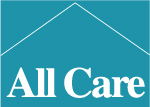February is Healthy Heart month and All Care is pleased to publish a blog series covering what you need to know about heart disease, how to reduce your risk, the different effects of heart disease in women, signs and symptoms of a heart attack, as well as how to incorporate healthy habits and recipes into your lifestyle to increase the health of your heart.
Part I: Heart Disease-What You Need to Know
Heart disease is an umbrella term for any type of disorder that affects the heart. Heart disease means the same as cardiac disease but not cardiovascular disease. Cardiovascular disease refers to disorders of the blood vessels and heart, while heart disease refers to just the heart.
In the United States, someone has a heart attack every 34 seconds. Every 60 seconds, someone in the United States dies from a heart disease-related event. Heart disease is an equal opportunity killer, it is the #1 killer of American men and women attributing to at least 1 million deaths annually in the United States. Not only does heart disease not discriminate against gender but it is also the leading cause of death for people in most racial or ethnic groups in America; blacks, whites, and Hispanics are equally effected while heart disease is the second biggest killer only behind cancer for Asian Americans, Pacific Islanders, American Indians, and Alaskan Natives. In fact, cardiovascular disease claims more lives than all forms of cancer combined. Financially, the direct and indirect costs of heart disease in the United States total more than $320 Billion including health expenditures as well as loss of productivity.
So what is heart disease?
Examples of heart disease include: Arrhythmia – an irregular heartbeat.
- Tachycardia is when the heart beats too fast
- Bradycardia is when the heart beats too slowly
- Premature contraction is when the heart beats too early
- Fibrillation is when the heart beat is irregular
Arrhythmias are problems with heart-rhythm. They happen when the heart’s electrical impulses that coordinate heartbeats do not work properly, making the heart beat in a way it should not, either too fast, slowly or erratically. Irregular heartbeats are common, we all experience them. They feel like a fluttering or a racing heart. However, when they veer too far from normal heartbeat or occur because of a damaged or weak heart, they need to be taken more seriously and treated. Irregular heartbeats can become fatal.
Congenital heart disease – this is a general term for some birth defects that affect how the heart works. Congenital means you are born with it. Examples include:
- Septal defects – there is a hole between the two chambers of the heart. This condition is sometimes called hole in the heart.
- Obstruction defects – the flow of blood through various chambers of the heart is partially or even totally blocked
- Cyanotic heart disease – not enough oxygen is pumped around the body because there is a defect (or some defects) in the heart.
Coronary artery disease (CAD)- the most common type of heart disease and is the leading cause of heart attacks, CAD causes the coronary arteries, which supply the heart with nutrients, oxygen and blood become diseased or damaged (becoming hardened and narrow), usually because of plaque deposits (cholesterol-containing deposits). Plaque accumulation narrows the coronary arteries and the heart gets less oxygen. CAD can lead to:
Angina – also known as angina pectoris, occurs when an area of heart muscle does not get enough oxygen. The patient experiences chest discomfort, tightness or pain. Angina is not technically a disease, but rather a symptom of coronary artery disease. Lack of oxygen to the heart muscle is usually caused by the narrowing of the coronary arteries because of plaque accumulation (atherosclerosis).
Myocardial infarction – also known as heart attack, cardiac infarction and coronary thrombosis. Interrupted blood flow (lack of oxygen) damages or destroys part of the heart muscle. This is usually caused by a blood clot that develops in one of the coronary arteries (blood vessels that supply the heart with blood). It can also occur if an artery suddenly narrows (spasm).
Heart failure – also known as congestive heart failure. The heart does not pump blood around the body efficiently. The left or right side of the body might be affected; sometimes both sides are. Coronary artery disease or hypertension (high blood pressure) can over time leave the heart too stiff or weak to fill and pump properly.
What does that all mean?
To summarize, while some forms of heart disease are genetic and others are controlled by lifestyle choices, there are still risk factors and preventable measures one can take to help prevent the onset and/or worsening of heart disease related episodes and to increase one’s general health.
Risk Factors:
- Tobacco Use
- Obesity/Poor Diet
- Diabetes
- Stress
- Poor Sleep Hygiene
- High Blood Pressure
- Inactivity
Signs of Potential Heart Disease:
- Shortness of breath
- Trouble breathing when laying down or flat
- Swelling in lower extremities
- Chronic Fatigue/Weakness
Preventable Measures:
- Healthy Sleep Schedule
- Healthy Diet Choices
- Regular Exercise
- Stress Management
- Regular Health Screenings
All Care will be continuing its Heart Healthy Blog series throughout the month of February to help raise awareness and provide resources regarding this silent killer that effects millions of Americans each year.
Be sure to come back and check out next week’s installment which will cover in detail the various risk factors to heart disease and what you can do to reduce those risks to improve your #QualityofLife and insure that your heart is strong, healthy, and full!




